Pistia L.
water lettuce
Araceae
unlikely to be confused with any other genus when plants are mature; juvenile plants and seedlings easily confused with Hydrocharis, Limnobium, Phyllanthus, Spirodela
information not available; possibly South America or Africa
Pistia stratiotes L.
most tropical and subtropical regions of the world
a noxious weed in numerous countries around the world
floating, stoloniferous rosetterosette:
(n) a radiating cluster of leaves, usually close to the ground at the base of a plant
 plant
plant
Perennialperennial:
(adj) (of a plant) having a life cycle of more than two years
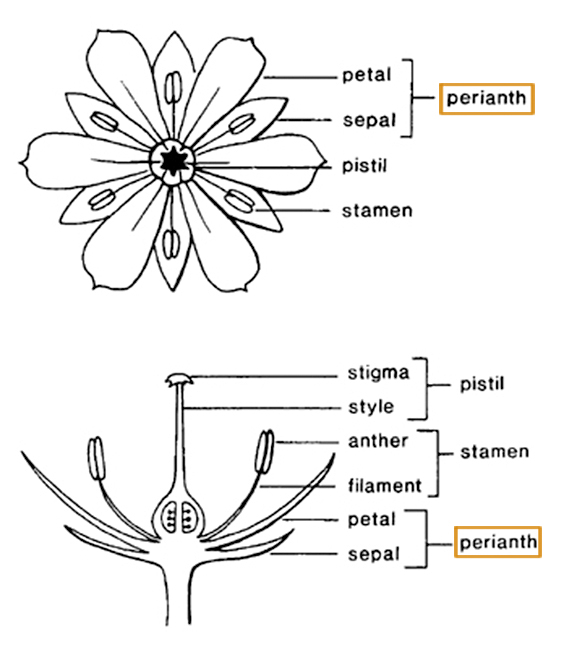 , stoloniferous, free-floating. Leaves in rosetterosette:
, stoloniferous, free-floating. Leaves in rosetterosette:
(n) a radiating cluster of leaves, usually close to the ground at the base of a plant
 , sessilesessile:
, sessilesessile:
(adj) attached directly, without a stalk
 or short- petiolatepetiolate:
or short- petiolatepetiolate:
(adj) relating to or in the form of a petiole; bearing petioles
 ; leaf bladeblade:
; leaf bladeblade:
(n) (syn. lamina) the flat, expanded part of a leaf, frond, or petal (excluding, e.g., the petiole)
 obovateobovate:
obovateobovate:
(adj) ovate, with the narrow end at the base
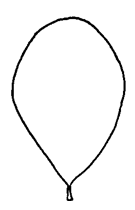 , emarginateemarginate:
, emarginateemarginate:
(adj) with a shallow notch at apex
 and sometimes undulateundulate:
and sometimes undulateundulate:
(adj) (of, e.g., a margin) with a wavy surface; wavy in the vertical (up and down) plane
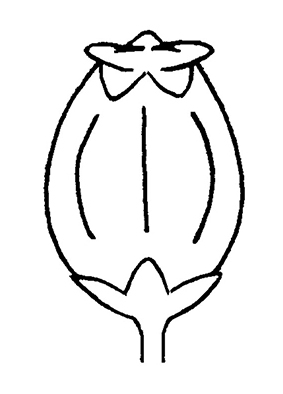 apically, densely pubescentpubescent:
apically, densely pubescentpubescent:
(adj) (1) covered with short, soft hairs; (2) bearing hairs
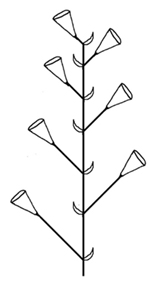 , filled with aerenchymaaerenchyma:
, filled with aerenchymaaerenchyma:
(n) plant tissue with large, gas-filled intercellular spaces that facilitates gaseous exchange and maintains buoyancy
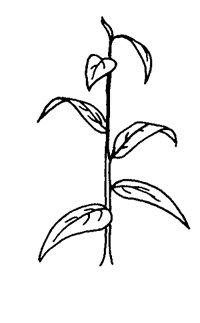 for floatation, venationvenation:
for floatation, venationvenation:
(n) the arrangement of veins in a leaf
 parallel. Roots numerous, long, pinnately branched. Inflorescenceinflorescence:
parallel. Roots numerous, long, pinnately branched. Inflorescenceinflorescence:
(n) the arrangement of flowers on the floral axis
 a small spadixspadix:
a small spadixspadix:
(n) a spike of small flowers borne on a thick, fleshy axis
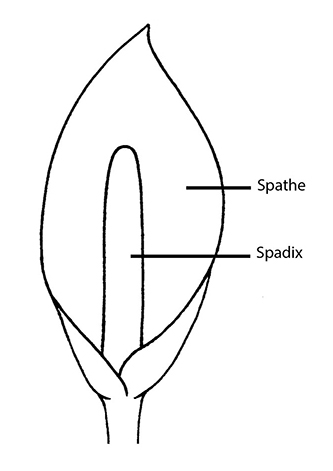 borne on a short, axillaryaxillary:
borne on a short, axillaryaxillary:
(adj) in, of, or produced from an axil
 pedunclepeduncle:
pedunclepeduncle:
(n) the stalk of a flower cluster or inflorescence
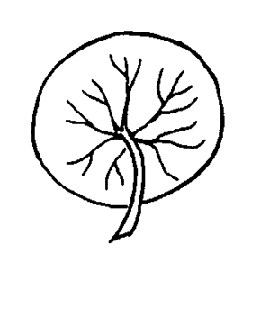 ; spathespathe:
; spathespathe:
(n) a large bract or bracts subtending and often enclosing an inflorescence
 green, hairy, tubulartubular:
green, hairy, tubulartubular:
(adj) (of a corolla, perianth, calyx tube or other structure) (1) tube-shaped; cylindrical: narrow and elongate with more or less straight sides; (2) having segments fused into a tube (of any shape)
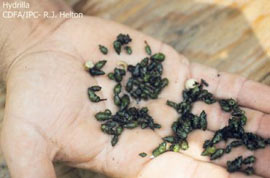 below, open above, constricted between male and female parts of spadixspadix:
below, open above, constricted between male and female parts of spadixspadix:
(n) a spike of small flowers borne on a thick, fleshy axis
 ; spadixspadix:
; spadixspadix:
(n) a spike of small flowers borne on a thick, fleshy axis
 reduced, fused to spathespathe:
reduced, fused to spathespathe:
(n) a large bract or bracts subtending and often enclosing an inflorescence
 on one side. Dispersal by seed and plantlets.
on one side. Dispersal by seed and plantlets.
still waters of most water bodies
Pistia is a highly distinctive genus that consists of a single species, P. stratiotes. The origin of Pistia is speculative, with suggestions that it originated in Africa or North America, based on historical records and fossils. Based on the preponderance of insect herbivores that originate from South America that feed on this plant, it is more plausible that this is the actual origin. Pistia is widely traded as a pond plant and under high nutrient conditions can quickly dominate a water body as a dense, floating monoculture. A 'mini' version is available but is simply juvenile plants grown under less than optimal growning conditions. This form is highly stoloniferous, with flat rounded leaves.